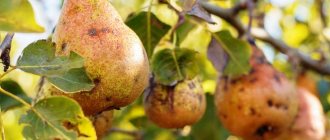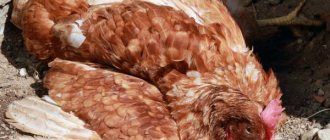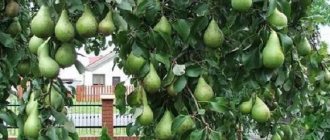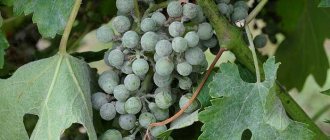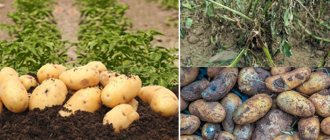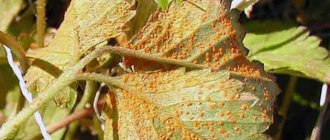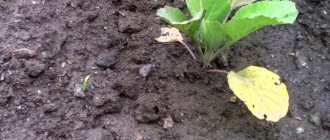Bacterial burn has become a scourge for owners of pears, apple trees and other fruit plants. A dangerous disease can destroy an entire garden, so it needs to be dealt with at the initial stage.
Have you ever noticed black or dark brown lesions on pear trees, apple trees, plum trees and other fruit trees? Moreover, necrotic spots are noticeable not only on individual leaves, but also on branches and even trunks. These are signs of fire blight , a dangerous infectious disease that affects more and more trees every year.
Who is the causative agent of the disease?
The bacterium Erwinia Amilovora was first identified in the United States. It is this that causes bacterial burn, which causes pear and apple trees to dry out. Among gardeners, the disease is often called Erwinia. Previously, the infection affected orchards in America (Canada, USA) and Australia. Now trees with signs of bacterial burn can be found in Russian amateur and industrial gardens.
A dangerous disease that causes massive death of fruit trees appeared in the south of the country in the 90s of the last century and continues to spread. Fighting infection is difficult because bacteria affect all tissues, even those deep under the bark. Microbes parasitize in the sap, blood vessels, and cambium. Without proper treatment, an infected pear dies within 2-3 years.
Gardener's actions in spring, summer and autumn
With the onset of March, it is necessary to treat pears, apple trees and other plantings with Bordeaux mixture. Also at this time of year, sanitary pruning is carried out, after which the cut points and cracks must be covered with garden pitch.
In mid-summer, it is imperative to treat the plantings. Systemic antibiotics are suitable for this pore. The use of Fitolavin will reduce damage to young shoots by 80%.
Autumn is the time for pre-winter spraying with fungicides containing copper and zinc.
Note! Waterlogged soil and excess nitrogen can provoke the occurrence of disease.
Gardeners who want to avoid Irvine bacteria should purchase pears that are resistant to the disease.
Causes and factors of the disease
Scientific research on Erwinia Amilovora continues. Scientists are identifying factors influencing the development and spread of a dangerous infection. The main causes of the disease are:
- birds and insects, they are carriers of bacteria;
- the presence of mechanical damage to the cortex, they facilitate the penetration of infection;
- windy weather;
- unbalanced root feeding, leading to excess nitrogen in the soil;
- You can introduce fire blight into your garden with new, infected pear seedlings or by grafting infected cuttings.
Scientists note factors influencing the intensity of the spread of infection. These include a sharp increase in air temperature in late spring and early summer, and increased humidity during prolonged rains.
In early summer and spring, the infection is carried by bees collecting honey from flowering pears. In autumn, the infection is spread by wasps feeding on the juice of ripe fruits. Low temperatures reduce the activity of Erwinia Amilovora. In winter, pears do not become infected with fire blight.
Main reasons
The source of the infectious process is often trees and shrubs infected with enterobacteria. A liquid containing microorganisms and small particles flows from their bark. They spread easily - with air flow, and are carried by insects and birds.
It is absolutely not necessary to have an affected plant in your area; the infection can “come” from neighbors. That is why the main danger is represented by abandoned garden areas located nearby.
The rate at which the lesion develops depends on several factors:
- variety, its resistance to bacteria;
- the age of the tree and the state of its immunity;
- development conditions.
It is important to consider that elevated temperature and humidity are considered favorable for enterobacteria. Infection is more likely to occur in summer during rainy weather. In spring and autumn, when the temperature does not rise above 18 degrees during the day, there is practically no danger.
Fire blight peaks in spring. This is due to the fact that the infection penetrates the tissues in August, and the first signs are difficult to detect in September-October due to the completion of the growing season.
How does fire blight become infected?
Bacteria form colonies on the bark, fruits, and leaves of pears. They look like drops of amber-colored liquid and appear in summer. A bird or insect, touching the exudate, becomes a carrier of infection. The weakest point of a pear is its flower buds. They suffer from infection first, then the bacteria affect other parts of the tree.
The disease develops at different rates. It depends on the phase in which the pear was when the bacteria penetrated it. The buds turn black and dry out if infection occurs while they are blooming. The buds wither and darken, the shoots and leaves turn black if Erwinia Amilovora gets on the pear during flowering.
At the last stage of the disease, the bark softens and exudate is released. It is white at first, then turns brown under the influence of atmospheric oxygen. The bark of a diseased pear becomes blistered and changes color.
The tree dies if pathogens penetrate the root system.
Hives
Plants can cause urticaria by an immune and, more often, non-immune (toxic) mechanism.
Immune urticaria, resulting from IgE-mediated mast cell degranulation, usually occurs in people with chronic, persistent exposure to fresh fruits or vegetables, often with a history of atopy.
In principle, any plant can be a trigger for immune urticaria - the most commonly cited in the literature are: celery (Apium graveolens), potato (Solanum tuberosum), mustard, kale (Brassica oleracea), pepper, lettuce, strawberries and Brazilian rubber (Hevea brasiliensis) , which is the most important raw material for latex production.
In latex products, the allergens are surface proteins that are not sufficiently extracted from the Brazilian rubber tree, which can cause severe hives. People with latex allergies may experience a cross-reaction to fruits such as bananas or apples. Other fruits (kiwi, pineapple, peach, plum, mango, melon, lemon), vegetables (tomatoes, onions, garlic, carrots), herbs, grains and trees are also potential triggers.
Plants after heat treatment or deep freezing are characterized by less allergenic potential.
Clinical symptoms usually appear approximately 30 minutes after contact with the plant in the form of skin itching, erythema, urticaria, burning, and sometimes blisters and exudate also appear.
Immune contact urticaria is one of the occupational dermatoses among producers and sellers of fruits, vegetables and spices (beans, lettuce, mustard, pepper), cotton growers, carpenters working with southern wood.
A more common plant-based form of urticaria is non-immune urticaria. The reaction usually occurs after contact with nettle (Urtica dioica), the most common cause of herbal urticaria. The surface of the leaves of this group of plants have sharp stinging and stinging hairs containing histamine, serotonin and acetylcholine.
Skin lesions appear in all exposed people, and hives blisters reach their maximum size approximately 3 to 5 minutes after exposure. Subjective symptoms, such as burning and itching, disappear within 1-2 hours, and tingling can persist for up to 12 hours. Non-immune urticaria can also be caused by many other plant species.
Treatment of urticaria
Which varieties are susceptible to fire blight?
There are no varieties that are 100% immune to fire blight . Modern pear varieties have different susceptibility to bacterial infection. Pears of foreign selection are not resistant to Erwinia Amilovora:
- Williams;
- General Leclerc;
- Santa Maria;
- Duranda;
- Estimator.
The Conference variety is popular among gardeners in Western Europe, but is relatively resistant to fire blight. The old American variety Favoritka and the frost-resistant Lukashovka pear, bred for Siberia, are vulnerable.
Autumn varieties of pears
Among the autumn varieties that are resistant to diseases and pests is the Autumn Bukovyna pear. The color of the fruit is golden yellow, with a delicate pink blush. The pear bears fruit quite abundantly, has soft and juicy pulp that literally melts in the mouth, and has a sweet and sour taste. The fruits are harvested from September to October. The variety is frost-resistant and practically not susceptible to scab and fire blight.
Tavricheskaya pear belongs to the autumn-winter variety, characterized by high fruiting, good transportability and frost resistance. The fruits are quite large, oval or ovoid in shape. When ripe, the color of the fruit is bright yellow with a slight pinkish blush. The pulp is juicy, very tasty with a spicy aroma. The tree is medium-sized, characterized by high resistance to scab and bacterial leaf burn.
Signs and symptoms of the lesion
The first symptoms of bacterial burn can be noticed on the pear in the spring during the swelling of the buds and flowering. Infected buds do not bloom, they become dark and dry out. Buds and blossoming flowers dry out and turn black.
At the next stage, the disease affects the leaves and set fruits. With a bacterial burn, pear leaves curl, turn black, the ovaries dry out, darken, and stop developing. In a mummified state, they can hang on a tree until late autumn.
Penetrating into the tissue of the tree, the bacteria infect the shoots. The branches are deformed - they bend, the bark on them turns black, spots appear on it. Sick pears appear burnt and charred. At the last stage of a bacterial burn, a red-brown pattern appears on the trunk and skeletal branches.
See also
Description of the Yakovlevskaya pear variety, pollinators and growing rules
Read
It is formed by juice flowing onto the bark. At first it is white, later it becomes red-brown. The pear's bark begins to peel off. It is impossible to save her in the last phase of the disease. It can be difficult for gardeners to establish the correct diagnosis, because similar symptoms occur with a lack of moisture in the soil and bacterial cancer.
General characteristics of the disease
Young trees are more often exposed to infection, but old trees are not immune from it. The insidiousness of the infection is that it is not always possible to make a correct diagnosis, accurately determine what to treat, and start therapy on time - sometimes the symptoms are similar to those of other diseases.
Pathogen
The causative agent of the infection is the bacterium Erwinia amylovora, a member of the Enterobacteriaceae family. It penetrates the vessels of the plant and feeds on its juices. Coexists well with some pathogens of fungal diseases. Under favorable conditions, it causes the death of a fruit tree in 1–2 seasons.
Causes of appearance and favorable environment for development
The source of infection is usually a diseased plant (tree, shrub). It releases a liquid contaminated with bacteria, small particles of which, under the influence of wind, can move through the air over long distances. The rate of infection depends in part on:
- on the age and general condition of the tree;
- pear varieties;
- growing conditions (soil, climate).
Bacteria begin to multiply more actively with high humidity and accompanying warm weather. Rapid reproduction of Erwinia occurs even in water drops. Obvious signs of the disease may appear in both spring and summer.
Symptoms
The first symptoms of the disease with bacterial burn are darkening and drying of the buds, wilting and blackening of flowers during spring flowering. Having dried, the flowers do not fall off, but remain on the tree, after which the infection moves to young twigs and leaves. Burns on leaves and branches, as well as flowers, are dark in color. Shoots and leaf plates become deformed, curl up and dry out.
The fruits on the branches darken and dry out. When the disease spreads to the trunk and branches, the bark becomes soft and brown stains appear on it. Cloudy droplets of light liquid—exudate—appear on the pear, which indicates an active inflammatory process. Drops frozen in air acquire a dark color. A completely blackened trunk indicates the death of the tree.
What factors provoke the spread
Bacteria from a diseased tree can be transferred in several ways:
- pollinating insects or pests, less often - birds;
- with the help of the wind;
- rain - the risk of infection increases if there is damage to the tree bark;
- through contaminated garden tools.
How to fight bacteriosis
A bacterial burn is dangerous because its first symptoms are similar to those of diseases caused by fungi. Many gardeners treat pears infected with bacteria using fungicides (“HOM”, “Skor”). These drugs do not have the desired effect, the trees continue to hurt, time is running out, they are effective against moniliosis and cytosporosis.
Erwinia needs to be combated in the spring and comprehensively, treating pears with fungicides and antibiotics.
Any spraying with drugs is effective in a short period of time, it lasts a maximum of 2 weeks. Bacteria emerge from the capsules from the beginning of sap flow and are vulnerable before flowering begins. It is important for the gardener not to miss the moment when sticky exudate appears on the bark. One drop of it contains millions of bacteria. They are spread over a large area by wind, rain and insects, infecting new trees.
We use chemicals
Before the leaves appear, the trunk and branches of the pear are treated with chemicals containing copper or zinc:
- "HOM";
- "Zineb."
You should not use copper sulfate or Bordeaux mixture. They are very toxic and harm plants. Treatment with chemicals should be completed 5 days before flowering begins. “HOM” and “Zineb” do not destroy bacteria, they inhibit their reproduction and kill the fungal infection that always accompanies a bacterial burn.
Antibiotics
Antibacterial drugs are used before flowering, at the beginning and end of flowering. When exudate appears, pears are given a lotion with Ofloxacin solution. Dissolve 1 tablet in a liter of water, remove the viscous mucus, and apply a rag soaked in an antibiotic solution to the wound.
"Streptomycin"
The inexpensive drug is successfully used in industrial and amateur gardens. To obtain a working solution, it is enough to dilute 1 ampoule in 5 liters of water. Pears with signs of bacterial burn are sprayed every 20 days, treatment begins in May.
In severe cases, pears are injected and placed in wood. First, the wood in the area of the infection is cleaned, then an injection is given.
"Gentamicin"
During the summer, pears are sprayed at least 3 times with an interval of 5 days. Method of using the working solution:
- water - 1 l;
- ampoule 2 ml - 1 pc.
"Tetracycline"
An antibiotic is used no more than once a year. Dissolve 2 tablets in 3 liters of water. The effectiveness of the antibiotic increases when Tetracycline is used simultaneously with Streptomycin. Spraying is not carried out in hot weather; at high temperatures, the antibacterial properties of the solution are reduced.
"Fitolavin"
To process one adult pear during the growing season, the formation of buds and ovaries, 2 to 5 liters of working fluid are required. It is prepared in the following proportions:
- water - 10 l;
- "Fitolavin" - 20 ml.
The antibiotic is used at the very end of flowering in a mixture with the drug "Skor", during the active growth of shoots it is combined with the products "Zineb", "HOM", "Acrobat". The Fitolavina solution works during cold weather.
Folk remedies
There are no effective recipes for fire blight on pears, so gardeners usually do not consider using traditional methods. There is evidence that the drug “Farmayod” helps against bacterial burns. It is used according to the scheme shown in the table.
| Phase | Amount of “Farmayod” per 10 liters of water (ml) |
| Green cone | 5 |
| The appearance of the first pink buds | 5 |
| Formation of ovaries | 10 |
| Pouring fruits | 10 |
Pears are sprayed in calm, dry weather, not late in the evening or early in the morning.
Cardinal methods
Radical methods of control are resorted to if the garden is large and has many young fruit trees. Blackened trees affected by bacteria are uprooted and burned. The place where they grew is cleared of weeds.
The remaining pears and apple trees are treated with an antibiotic solution every week. To prevent addiction, medications are alternated. Trees with the first signs of erwinia are examined using clean tools, and diseased branches are cut out.
When cutting, part of the healthy wood is captured. All wounds are first treated with an antibiotic solution, then covered with garden pitch.
Finally, the pears are treated with a mixture of antibiotic and copper sulfate. If there are diseased trees in the garden, then all the buds of young pears are cut off during the first 2 years. This reduces the risk of infection with bacteriosis through flower buds.
| Degree of tree infection | Control measures |
| Crown drying out > 30% | Uprooting and burning trees |
| Crown drying <30% | Removing diseased branches while capturing healthy wood |
Treatment of chemical burns
To provide adequate assistance, it is necessary to know the type of chemical damaging agent. Indeed, in most cases, in order to eliminate the substance, repeated rinsing of the affected area with water is recommended (for 10-30 minutes). But if damaged by quicklime, water is prohibited; the burned area is washed with oil.
Next, it is necessary to neutralize the chemical substance remaining in the tissues. For acid burns, apply lotions with 2% soda, irrigation with 0.1% ammonia solution (15 drops per glass of water), 1% lime water, powder with chalk or burnt magnesia. To neutralize alkalis, use 2% solutions of hydrochloric, acetic, boric, and citric acids. Phosphorus is neutralized with 2% copper sulfate. Next, the burned area is covered with a sterile bandage with panthenol, syntomycin emulsion, Shostakovsky balm, solcoseryl or sea buckthorn oil (depending on the degree of the burn and other features). Subsequent treatment tactics are identical to the management of thermal burns.
In case of acid burns, the necrotic scab disappears after about 10 days. As a rule, in this case, scar deformities are not observed. Damage from alkalis is often accompanied by granulating wounds, which heal slowly and lead to the formation of rough scars. To prevent scar contractures on the extremities, it is recommended to apply plaster splints until the wounds are completely healed. After this, regular gymnastic exercises and a course of physiotherapeutic procedures (electrophoresis with lidase, etc.) are necessary.
With extensive wound surfaces and the development of disfiguring or movement-impairing scar deformities, patients require additional surgical interventions.
Prevention
Basic preventive measures are planned for the fall. There is no point in fighting Erwinia Amilovora with antibiotics during this period. Bacteria, preparing for winter, stop the reproduction process and turn into capsules. Medicines do not penetrate into them.
See also
Description and characteristics of 14 varieties of Bere pear, planting and care
Read
Selection of resistant varieties
You can purchase an infected seedling on the market or in a nursery, so when purchasing you need to carefully check the plant for mechanical damage to the trunk and branches. In specialized nurseries you can select pear varieties that are resistant to the bacterium Erwinia Amilovora:
- Carmen;
- Severyanka;
- Long awaited;
- Larinskaya;
- Rainbow;
- Decabrinka;
- Uralochka.
Garden Pest Control
Harmful insects, parasitizing the pear, weaken its immunity and transmit viruses, bacteria and fungi. Garden pests are involved in infecting trees; they carry on their paws particles of exudate containing millions of dangerous microorganisms that cause fire blight in pears.
They fight harmful insects using standard methods:
- in summer, keep tree trunk circles and row spaces clean, regularly removing weeds;
- in the fall, they rake and destroy fallen leaves and fruits;
- During the entire spring-autumn season, pear crowns and tree trunks are treated, modern insecticides and infusions of plants prepared according to folk recipes are used.
Disinfection of garden tools
Secateurs, loppers, and knives are used to perform various gardening jobs. They need to be disinfected every time, otherwise they will cause the spread of infection. Amateur gardeners do this in different ways:
- calcined on fire;
- wash the blades with kerosene;
- wipe with alcohol or vodka;
- dipped in a solution of copper sulfate;
- use a strong solution of potassium permanganate.
Carrying out preventive work
In the fall, measures are taken to increase the frost resistance of pears and protect the bark from frost damage and cracks. Before the onset of the first frost, trees are watered abundantly. The planned event has a name - moisture-charging irrigation.
In pears, it increases frost resistance; fewer cracks form on the bark in winter. In the spring, it will be more difficult for bacteria to penetrate under the bark.
To protect against sunburn and frost damage, the trunk and skeletal branches are whitened with lime or special garden paint. In the summer, leaf treatments are carried out against aphids, copperheads, and other insects. In June-July, high doses of nitrogen fertilizers are not applied to pears. Summer green operations are not carried out in an infested garden.
Summer pear varieties
Summer varieties are among the first to bloom in the garden. To spray them, use “Fitosporin” and antibiotics:
- "Tetracycline";
- "Ofloxacin";
- "Streptomycin".
The crown and trunk of the tree are treated with the solution. When planning the purchase of new seedlings, attention is paid to varieties resistant to fire blight. Among the summer varieties of interest are:
- Krasulya;
- Severyanka;
- August dew.
| Characteristic | August dew | Krasulya | Severyanka |
| Precociousness | 4th year | 4-5th year | 3-4th year |
| Ripening period | Mid August | Early August | Beginning (mid) August |
| Tree height | 3m | 4 m | 3-5 m |
| Fruit weight | 110-130 g | 90-120 g | 80-120 g |
| Shelf life | 2 weeks | 1-2 weeks | 2 weeks |
Autumn varieties of pears
The autumn variety Larinskaya, resistant to bacterial blight, was developed at the South Ural Research Institute. The tree begins to bear fruit in the 5-6th year. Starting from the 10th year, it annually produces about 46 kg of fruit weighing 110-140 g. The harvest ripens in the first ten days of September and is stored until November.
There will be no problems with the new Favorita pear variety. It is resistant to fire blight and scab. The harvest ripens in mid-September and is stored for about 30 days. Fruits weighing 160-250 g are considered the best in taste among autumn varieties. They have green-yellow skin and white, juicy flesh.
The Vekovaya pear variety has excellent winter hardiness, resistance to scab, fire blight, and mites.
The tree begins to bear fruit from the 4th-5th year. The harvest ripens in mid-September and is stored for about 30 days. The fruits have a sweet and sour taste with juicy white pulp, weighing 110-180 g. The weight of individual specimens reaches 500 g.
Preventive measures
It is impossible to completely insure yourself against the appearance of a bacterial infection on the site, but mandatory prevention will reduce the risk of infection. Preventive measures begin with the correct selection of pear seedlings. Regular inspection of trees will detect the first signs of the disease, and treatment will be carried out in a timely manner. Equally important is proper care - thanks to it, the immunity of the young tree increases.
Do not over-moisten the soil and overfeed the trees with mineral fertilizers, especially nitrogen.
In addition, it is recommended to regularly disinfect garden tools.
What you need to know when choosing seedlings
Often, seedlings are initially infected with an insidious infection. Dangerous planting material can be easily purchased by hand in unverified places. Therefore, you should only go shopping to specialized nurseries and retail outlets.
The seedlings must have a healthy appearance: no external damage, even and natural color. In addition, there are varieties of pears that are resistant to fire blight - they are less likely to be infected. These include:
- "Williams"
- "November"
- "Maria",
- "carmen"
The resistant variety is suitable for gardeners who have no experience in growing fruit trees.
Gardener's actions in spring, summer and autumn
In March, pears are sprayed with a solution containing copper, for example, Bordeaux mixture, and sanitary pruning is carried out. All damage and cuts are treated with garden varnish. The trees are carefully inspected so as not to miss one of the signs of infection - white drops protruding from the trunk and shoots.
In June-July, you can carry out a single preventive spraying with a solution of ofloxacin (or another antibiotic). And use a special product that activates the immunity of the plant organism (“Zircon”, “Silk”). In October, trees should be treated again with a copper-containing fungicide. These actions are taken to destroy the fungus, the destructive activity of which makes the pear vulnerable to the Erwinia bacterium.
Pest control
Along with the destruction of pathogenic fungi and bacteria, there must be a fight against pests - as a result of their activity, the defenses of the tree are weakened. In addition, harmful insects are capable of carrying infectious exudate from diseased plants on their paws. The pear is treated with insecticides from the store or herbal infusions and decoctions prepared at home. Pull out weeds, water the soil around the tree with insect repellent - there may be larvae in it.
Treatment of a bacterial burn of a pear does not always give a positive result, so preventive measures and proper care are important. By conducting regular tree inspections, you can detect the disease at a very early stage and safely get rid of it.
Source
Phytophotodermatosis
Such reactions are also known as plant-induced phytophotodermatitis. This is a group of skin reactions that occur by a non-immune mechanism after skin contact with plants containing phototoxic substances and exposure to ultraviolet radiation.
The most common compounds present in plants that cause phytophotodermatitis are furanocoumarins (psolarens, angelicins). They are present among others in the celery family (Apiaceae), which includes, for example, fennel, parsley, celery, lovage, Sosnowski's hogweed. And also in the Rutaceae family, which includes citrus fruits, rue and bergamot.
These reactions often occur in people who sunbathe in meadows, mow grass, and in children playing in the garden. The typical clinical picture is blisters on an erythematous substrate, well demarcated, affecting exposed skin areas (face, upper and lower extremities), with characteristic hyperpigmentation.
conclusions
Skin reactions caused by plants can be divided into:
- irritant contact dermatitis (mechanical or chemical);
- allergic contact dermatitis;
- urticaria (immune and non-immune);
- phytophotodermatitis.
The clinical picture is varied - from mild skin symptoms in the form of erythema, itching to severe toxic or allergic reactions. To make a correct diagnosis, a thorough interview of the patient should be conducted to determine exposure to individual plant species.
Preventive measures play an important role: using gloves when working with plants and thoroughly rinsing the skin with water after contact.
Treatment includes topical corticosteroids, oral antihistamines, and for severe reactions, general corticosteroids.
Sources
McGovern T. Dermatoses caused by plants. Dermatology. Fourth edition, 2022.
- Modi GM, Doherty SB, Katta R, et al. Plant irritant contact dermatitis. Dermatitis, 2000.
- Sasseville D. Dermatitis from new world plants. Euro J Dermatol 2009.
- Esser PR, Mueller S, Martin SF. Contact dermatitis caused by plant allergens. Planta Med 2022.
- Lovell RF. Occupational dermatitis caused by plants. Professional dermatology. Manson Publishing 1998.
- Bhatia R., Alikhan A., Maybach H.I. Contact urticaria: current scenario. J Dermatol 2009.
- Lehmann P. Photodermatosis. In: Burgdorf WHC, Pelzig G, Wolff HH, et al. Dermatology. Chelej Publishing, 2022.
